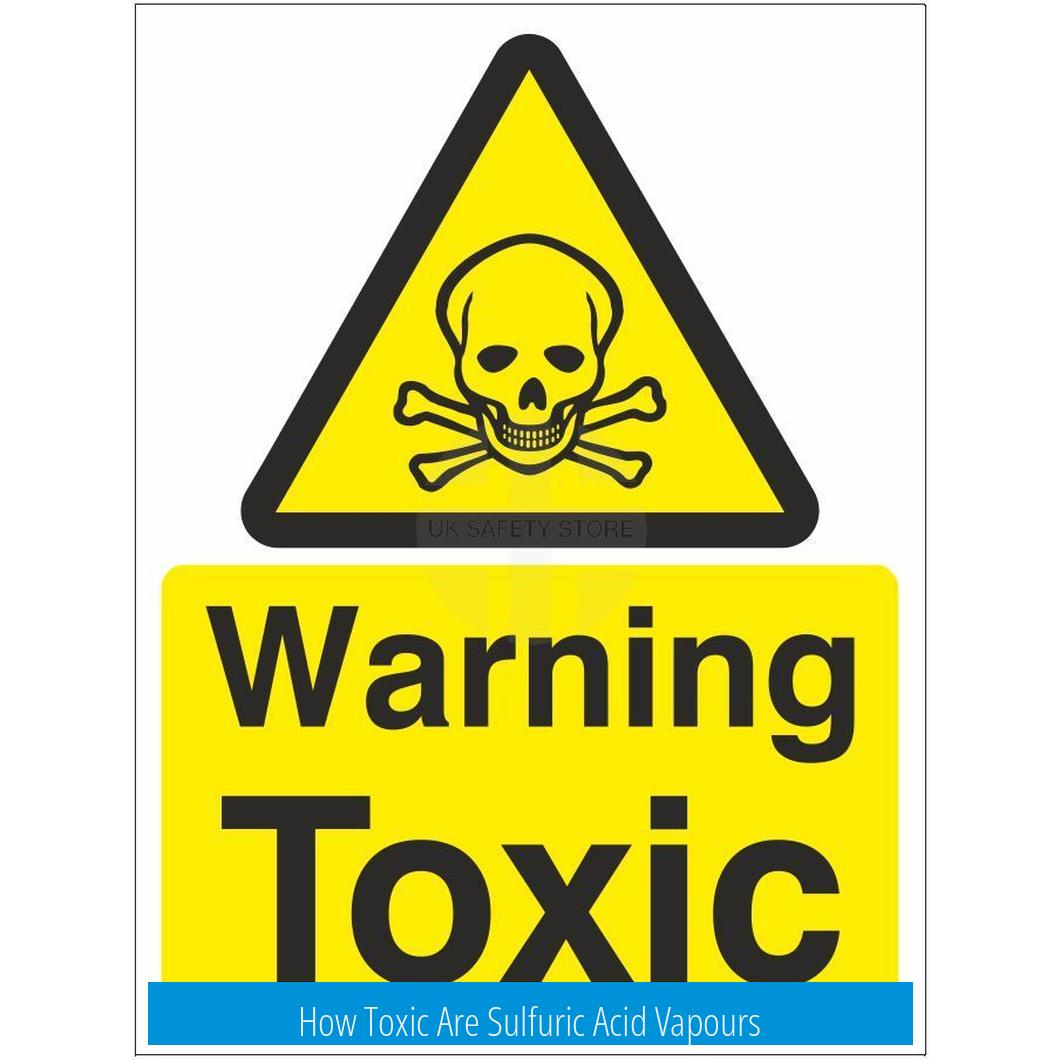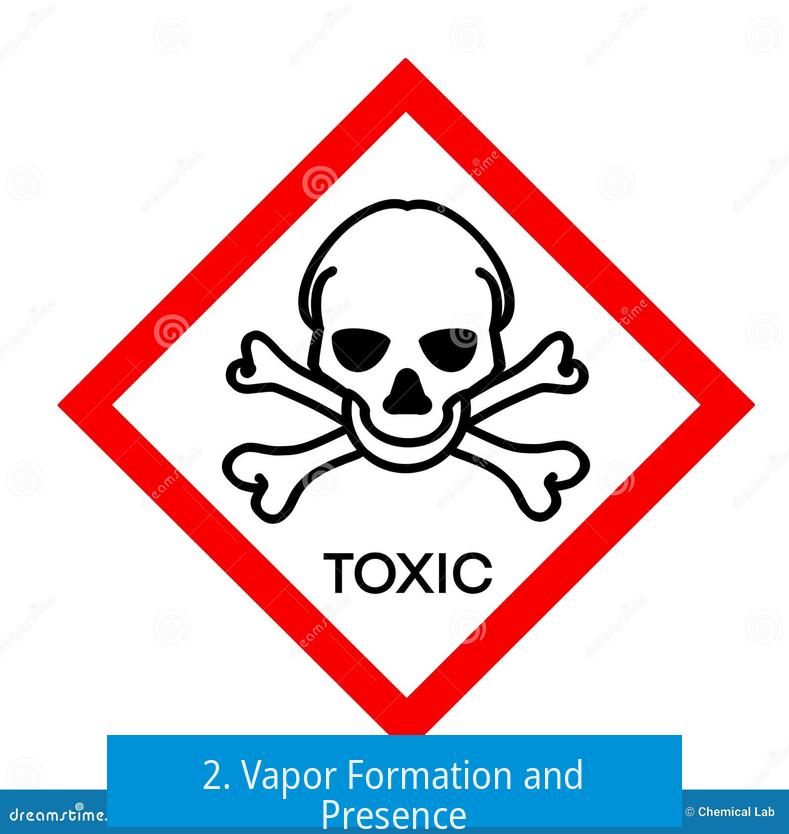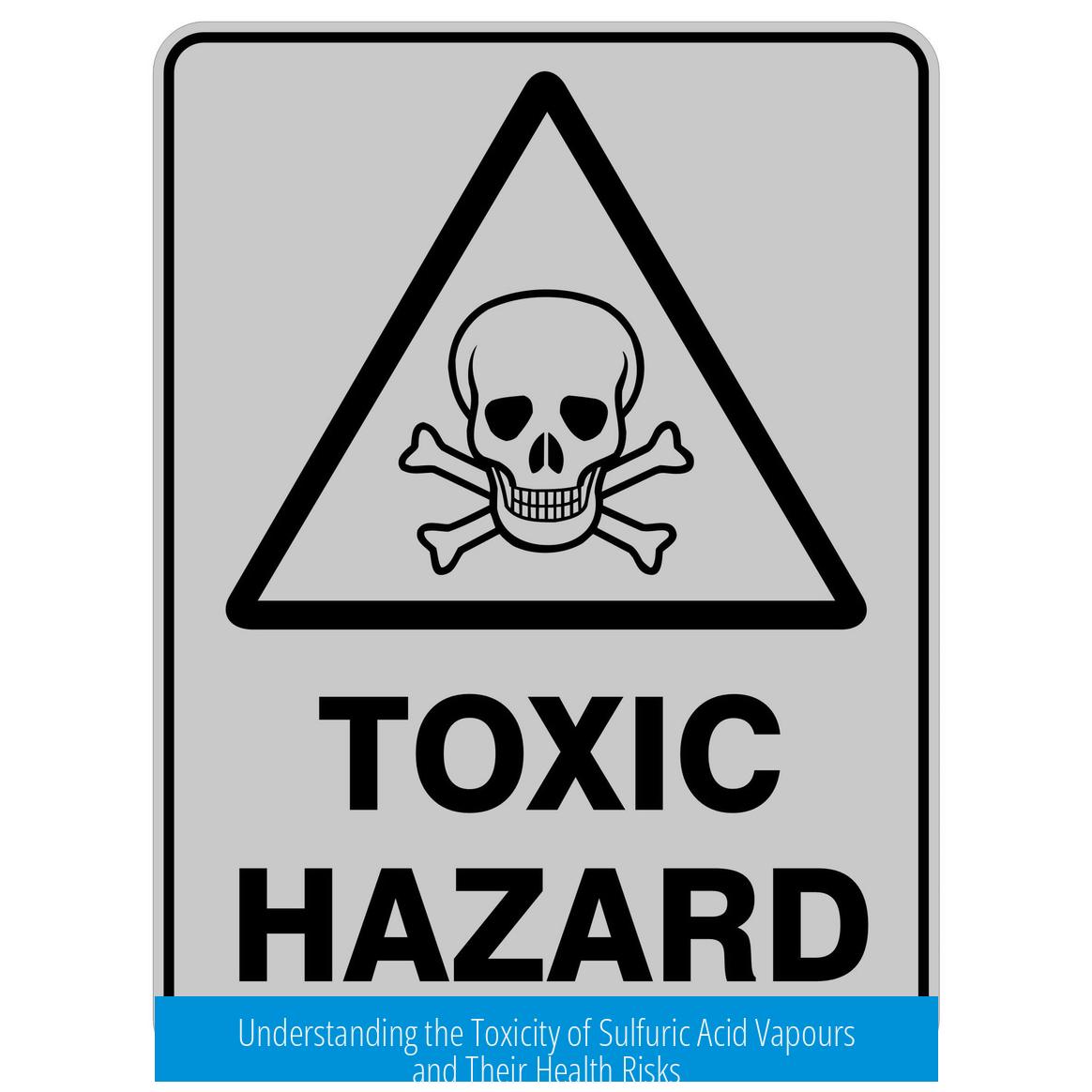How Toxic Are Sulfuric Acid Vapours?

Sulfuric acid vapours are not intrinsically toxic because pure sulfuric acid does not readily evaporate under normal conditions. However, these vapours and related gases can be extremely corrosive and dangerous, mainly due to their chemical reactivity and the by-products formed. Exposure can cause severe irritation and damage to skin, eyes, and respiratory systems.
1. Toxicity and Corrosive Nature
Sulfuric acid itself is not considered highly toxic in vapor form. Its main hazard arises from its strong corrosiveness. Even when inhaled or in contact, the acid damages tissues by chemical burns rather than systemic poisoning. The vapours cause irritation and chemical injury, especially to the skin and respiratory tract.
2. Vapor Formation and Presence

- Sulfuric acid has a very high boiling point (>300 °C), meaning it barely evaporates at room temperature.
- Thus, ambient sulfuric acid vapour is practically non-existent under normal conditions.
- What is often perceived as “vapour” may arise from the acid reacting with moisture or other substances, producing irritating gases or aerosols.
For example, sulfuric acid absorbs atmospheric water and becomes dilute. The real hazards come from secondary compounds like sulfur trioxide (SO3) gas formed at high temperatures or from reactions with materials such as sodium chloride (NaCl) releasing hydrochloric acid (HCl) gas.
3. Health Effects of Exposure
Short-term Effects
Exposure to sulfuric acid vapours or fumes can cause immediate irritation:
- Burning of eyes, nose, and throat.
- Skin irritation and itchiness, especially where vapours condense, such as hair or beard.
- Potential chemical burns in the respiratory tract leading to breathing difficulties.
Long-term or Severe Effects
Severe or prolonged inhalation can damage lung tissue. Recovery can be slow; some have reported months for full return of normal senses such as smell after exposure. Damage to skin is rapid and often visible early.
4. Chemical Reactivity and By-products
Sulfuric acid is highly reactive and readily forms sulfate salts when it contacts metals or minerals. These products are generally less toxic but still problematic.
Exposure hazards may be increased by:
- Formation of sulfur trioxide gas at elevated temperatures, which is more irritating and corrosive.
- Secondary gases like hydrogen chloride formed through reaction with chlorides found in pipes or drains.
- Other hazardous compounds depending on materials exposed.
5. Misidentification and Confounding Factors
Often, fumes attributed to sulfuric acid may actually come from other acids like hydrochloric acid which emit vapours more readily. Proper identification is critical when assessing risk or exposure.
In some cases, perceived “fumes” result from reactions between spilled acid and floor materials or residues.
6. Neutralization and Safety Measures
- Neutralize sulfuric acid spills using sodium bicarbonate (baking soda) solution; neutralization causes fizzing and safely reduces acidity.
- Ensure proper ventilation when working with concentrated acids.
- Use appropriate protective equipment to avoid skin and eye contact.
- In industrial settings, avoid leaving acid spills unattended, especially in pipes, to prevent damage and hazardous gas formation.
7. Summary of Hazards
While sulfuric acid vapours have low direct toxicity, their corrosiveness and chemical reactivity pose serious health risks.
Contact with vapours or related gases can cause chemical burns and respiratory damage.
Exposure may come from vaporization at high temperatures or from secondary reactions producing toxic gases.
Key Takeaways
- Sulfuric acid vapour is minimal under normal temperatures due to high boiling point.
- The acid is highly corrosive, causing tissue damage rather than poisoning.
- Health effects include irritation and burns to skin, eyes, and lungs.
- By-products like sulfur trioxide and hydrogen chloride gas are more hazardous.
- Proper neutralization and safety practices reduce risks effectively.
- Misidentification of acid vapours can complicate hazard assessment.





Leave a Comment